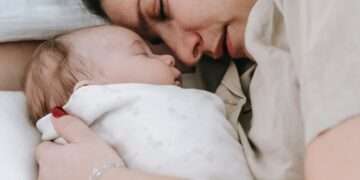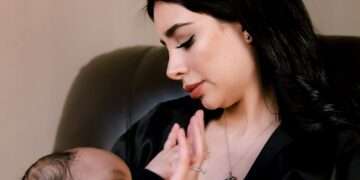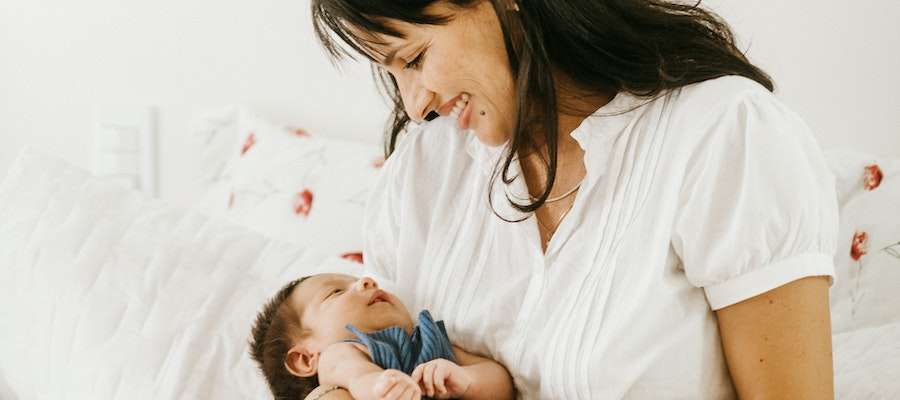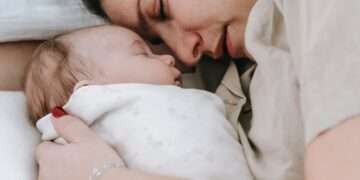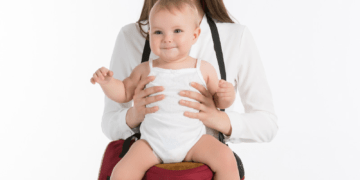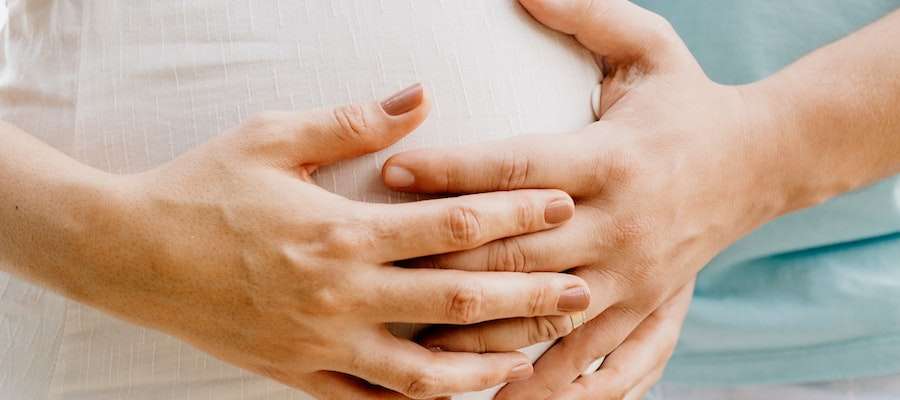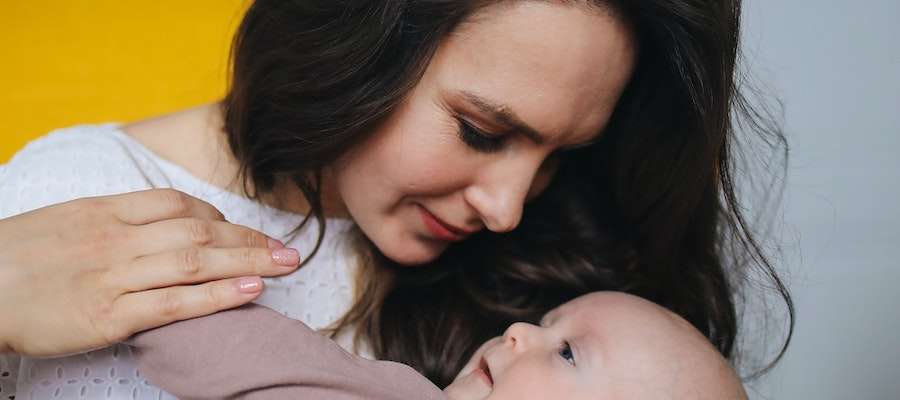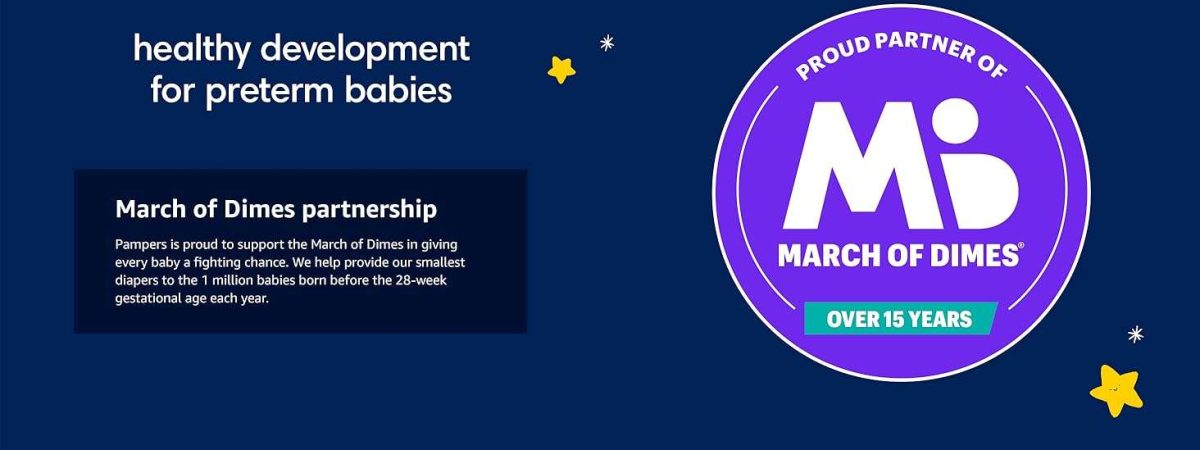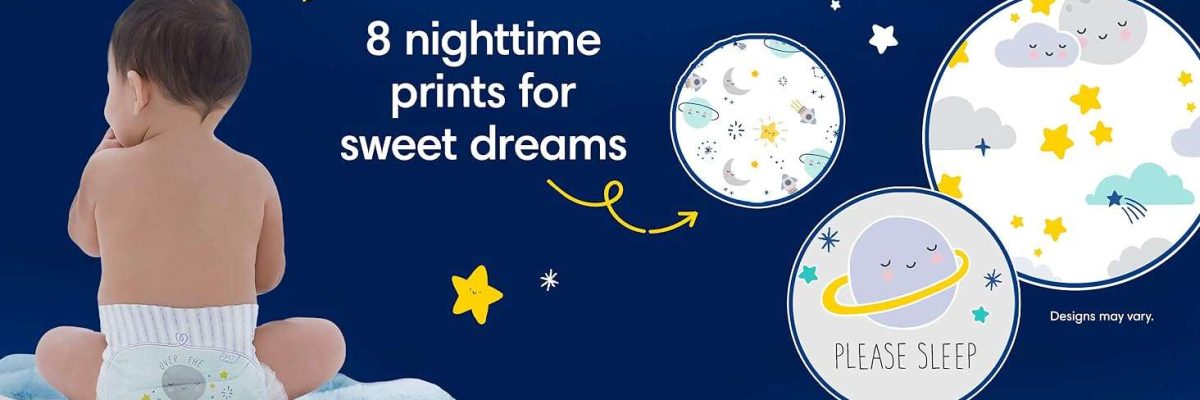
The 10 best baby diapers for your hero- baby?
Welcoming a new bundle of joy into your life is an unparalleled joy, but it also comes with a myriad of decisions to make, and one of the most important ones is choosing the right baby diapers. With a market flooded with options, from disposable to organic, eco-friendly to hypoallergenic, it can be overwhelming for parents to navigate through the sea of choices. Fret not, as we embark on a comprehensive journey to uncover the secrets of the perfect diaper for your precious little one.
1. The Diaper Dilemma: Disposable or Organic?
The age-old debate of disposable versus organic baby diapers has perplexed parents for generations. We delve into the pros and cons of each, exploring the convenience of disposables and the eco-conscious choice of organic diapers. Discover the best of both worlds as we showcase top-notch diaper brands in the USA.
2. Cracking the Code: Finding the Best Baby Diapers
In a market flooded with options, how do you discern the best baby diapers? Our in-depth analysis considers factors such as absorbency, comfort, and overall value for money. Uncover the top contenders that make diapering a breeze for parents and a delight for babies.
3. Sizing Matters: Navigating Newborn Diaper Sizes
One size does not fit all, especially when it comes to diapers. We break down the intricacies of newborn diaper sizes, ensuring your little one enjoys the perfect fit for optimal comfort and leak protection. Learn the ropes of sizing to make your diapering journey seamless.
4. Green Diapering: The Rise of Eco-Friendly Choices
As environmental awareness grows, so does the demand for eco-friendly diapers. Explore the world of sustainable diapering options, from materials to manufacturing processes. Join the movement toward a greener future for your baby and the planet.
5. Gentle Touch: Hypoallergenic Diapers for Sensitive Skin
For babies with delicate skin, hypoallergenic diapers provide a soothing solution. Dive into the world of diapers designed to minimize irritation and allergies. Uncover the science behind hypoallergenic materials that ensure your baby’s comfort without compromising on performance.
6. Budget-Friendly Bliss: Snagging the Best Baby Diaper Deals
Parenting can be expensive, but diapering doesn’t have to break the bank. We unveil the secrets to finding unbeatable baby diaper deals, from online promotions to subscription services. Save big without compromising on the quality your little one deserves.
7. Combatting Concerns: Diaper Rash Remedies That Work
Diaper rash is a common concern for parents, but fear not—effective remedies are at your fingertips. Explore natural and commercial solutions to keep your baby’s skin happy and healthy. Say goodbye to diaper rash woes with our tried-and-true tips.
8. The Future of Diapering: Embracing Biodegradable Diapers
As the world shifts toward sustainability, biodegradable diapers emerge as a beacon of hope. Understand the science behind these diapers and the positive impact they can have on the environment. Join the movement toward eco-conscious parenting with biodegradable diapering options.
9. Beyond the Basics: Diapering Accessories You Didn’t Know You Needed
Diapering goes beyond just the diapers themselves. Discover essential accessories that can make your life easier, from diaper pails to changing mats. Elevate your diapering routine with these must-have items.
10. FAQs: Your Burning Questions About Baby Diapers, Answered
In our final segment, we address common questions and concerns parents have about baby diapers. From washing organic diapers to choosing the right diaper size, we’ve got you covered. Consider this your go-to resource for all things baby diaper-related.
Embark on this journey with us as we unravel the world of baby diapers, providing you with insights, recommendations, and tips to make the best choices for your little one. Parenthood is an adventure, and we’re here to guide you every step of the way. Let’s dive into the wonderful world of baby diapering!
Choosing the best diaper for your baby can be stressful, especially for first-time parents. With so many types of diapers in the market, deciding which one is right for your child can be overwhelming. This blog will discuss some key points to remember when choosing a diaper for your baby. Whether you have just brought your newborn home or think you’re going wrong with diapering, we’ve got you covered! Our diaper-buying guide will help you pick the diaper packet that is just right for you and your little one.
What is baby diapers?
A baby diaper is a thick, soft, cloth or plastic-covered paper that can be placed between the legs and fastened around the waist, used for a baby who has not yet learned to use a toilet. If you’re looking for specific recommendations for baby diaper brands, it’s important to note that individual preferences can vary, and what works well for one baby may not be the best choice for another.
Diapers are considered safe for babies, even babies less than a day old. In fact, some diapers are made specifically for babies. Wearing diapers all day is not recommended. Wearing diapers 24/7, including at night increases the risk of skin irritation, rash, and skin rash.
Why is it important to choose the right diaper for your baby?
Baby diapers are essential for parents with young children. We know that Infants and toddlers do not develop enough bladder and bowel control till a certain age. These baby diapers come in handy to soak up urine and feces.
However, newborns and kids or babies using diapers have a tendency to develop a skin rash and infection from diapers around their buttocks, hips, thighs, and lower abdomen. It can happen if the diaper is too tight, has rough edges, is made of an irritant material, or leaks. Therefore, it is crucial to choose the most comfortable diaper for your kid.
There are many types of the best baby diapers to choose from. It can be overwhelming to consider all of the different types and decide which is best for your baby, especially if you’re a new parent. Whether this is your first baby or you’ve had one or two before, you know that diapers are one of the most important accessories you’ll need to have for the newest member of your family.
Different Types of Baby Diapers?
As a parent, you should understand the different types of the best baby diapers on the market. There are many different kinds, but they mainly boil down to the following types:
Disposable Diapers
Disposable baby diapers are the most widely used and convenient option for busy parents. The baby diaper is made from a combination of good quality superabsorbent materials, including wood pulp and synthetic polymers. Disposable baby diapers come in various sizes, ensuring a snug fit for babies of different ages and weights.
One of the significant advantages of disposable baby diapers is their exceptional absorbency. They have the ability to quickly draw moisture away from your baby’s skin, keeping them dry and comfortable. This feature is especially beneficial during nighttime use or when you’re on the go. Disposable baby diapers also come with adhesive tabs allowing easy and secure fastening.
Another notable feature of disposable baby diapers is their excellent leak protection. The materials used in these diapers help contain both liquid and solid waste, preventing any embarrassing accidents. Many disposable baby diaper brands offer designs with elastic leg cuffs, which can provide a barrier against leaks and ensure a secure fit.
Baby disposable diapers are also known for their convenience. They are designed to be used once and then discarded, eliminating the need for washing and drying. This aspect makes them ideal for parents who have limited time or access to laundry facilities.
Disposable Underwear
Disposable underwear is similar to disposable diapers except that disposable underwear is geared more toward older children, like those who are 4 years old or older. These diapers are a great accessory to have if your older child still has problems keeping a dry bed at night.
Pull-Ups
Pull-up underwear is what you’ll want when your child begins learning to use the potty by themselves. It’s easy for children to pull up and down on their own when going to the bathroom. These baby diapers are made to look and feel like ordinary underwear, but some are made to let a child know the moment they get even a little wet. This helps children learn when they need a bathroom break.
Cloth Diapers
Cloth diapers have experienced a resurgence in popularity due to their eco-friendly nature and cost-effectiveness. These diapers are made from high-quality soft, breathable fabrics such as cotton, bamboo, or hemp. Cloth diapers come in various styles, including pre-folds, fitted diapers, and pocket diapers.
One of the key benefits of cloth baby diapers is their reusability. Unlike disposable diapers, cloth diapers can be washed and reused multiple times, making them a sustainable choice for environmentally conscious parents. By opting for cloth diapers, you can significantly reduce your household waste and carbon footprint.
Cloth diapers are known for their excellent breathability, which promotes healthy skin and reduces the risk of diaper rash. The natural fibers used in cloth diapers allow for better airflow, preventing the build-up of heat and moisture that can cause skin irritation.
With cloth diapers, parents have the flexibility to customize absorbency. They can use additional inserts or boosters to enhance the baby diaper’s absorbency based on their baby’s needs. Additionally, cloth kid’s diapers are available in a wide range of adorable designs and patterns, allowing for a touch of personalization.
All-in-One Diapers
All-in-one diapers are sewn into waterproof covers. They’re perfect for quick changes and work well for overnight situations. They’re usually reusable, and some even come in a one-size-fits-all size that you can adjust as your child grows.
Fitted Diapers
Similar to disposables, fitted diapers have a narrower crotch and wide wings that fasten around your baby’s waist. Some fitted diapers have fasteners, some have snaps, and some have Velcro. There are even some fitted baby diapers that have elastic waists and legs and come with additional layers of absorbent material in the middle.
Pocket Diapers
Pocket diapers have a waterproof covering, much like all-in-one diapers. The covering includes a pocket where you can insert a folded baby diaper or a washable liner. These diapers usually come with snaps or Velcro fasteners to stay closed.
Unfolded Diapers
Unfolded baby diaper is rectangular in shape and are made of flat fabric that you can mold to fit your baby’s specific shape. These diapers are usually held in place with diaper pins or fasteners in three places.
Pre-Folded Diapers
Similar to unfolded diapers, pre-folded baby diapers are also rectangular in shape. But these baby diapers are not as big as unfolded diapers and can be easier to use. Pre-folded diapers need to be folded at least once, maybe twice, to fit inside a waterproof baby diaper cover. Still, these baby diapers are known for their versatility and ability to meet various absorption needs.
Biodegradable Diapers
Our Biodegradable diapers are gaining popularity among parents who prioritize sustainability and environmental consciousness. These diapers are made from plant-based materials such as bamboo, cornstarch, or wheat. Baby Biodegradable diapers are free from chlorine, fragrances, and other potentially harmful chemicals, making them a gentle choice for sensitive baby skin.
One of the key features of biodegradable diapers is their eco-friendliness. These baby diapers are designed to break down naturally over time, reducing their impact on landfills. By choosing biodegradable diapers, parents contribute to a healthier planet for future generations.
Despite their focus on sustainability, biodegradable diapers do not compromise performance. They offer excellent absorbency and leak protection, keeping your baby dry and comfortable throughout the day.
Biodegradable diapers are also available in various sizes and styles, catering to the needs of babies at different stages of growth. It’s important to note that kid’s biodegradable diapers require specific disposal methods to maximize their environmental benefits. Some brands can provide instructions for composting or proper disposal, ensuring that the diapers break down efficiently.
By understanding the features and benefits of each type of diaper, you can make a choice that aligns with your priorities and meets your baby’s needs. Whether you opt for the convenience of disposable diapers, the sustainability of cloth diapers, or the eco-friendliness of biodegradable baby diapers, the Motherhood Center is here to support and guide you in your parenting journey.
Factors to Consider When Choosing Diapers
When selecting diapers for your baby, it’s important to take several factors into consideration to ensure the perfect fit and functionality. Here are some key factors to keep in mind:
Baby’s Age and Size: Babies come in different shapes and sizes, so choosing the right diaper size is essential. Manufacturers provide size guidelines based on the weight and age range of babies. It’s crucial to select diapers that fit snugly around your baby’s waist and legs to prevent leaks and ensure comfort. Keep in mind that as your baby grows, you may need to switch to larger sizes for optimal fit and performance.
Absorbency: One of the primary functions of diapers is to keep your baby dry by efficiently absorbing urine and preventing leaks. Consider your baby’s urinary habits when choosing diapers. If your little one is a heavy wetter or sleeps for longer stretches at night, look for diapers with high absorbency to keep them comfortable and dry. Some diaper brands offer specific varieties designed for overnight use, which provide extra absorbency and leakage protection.
Comfort and Fit: Your baby’s comfort should be a top priority when selecting diapers. Look for diapers that are made from soft, breathable materials that won’t irritate your baby’s delicate skin. Diapers with stretchable waistbands and leg cuffs provide a secure yet gentle fit. Adjustable tabs allow for a customizable fit, ensuring comfort as your baby grows. Avoid too tight or loose diapers, as they can lead to discomfort and potential leaks.
Skin Sensitivity: Babies have delicate and sensitive skin, so it’s essential to choose diapers that are gentle and hypoallergenic. Consider opting for diapers that are free from fragrances, lotions, and harsh chemicals that can potentially cause skin irritation or allergies. Diapers labeled as “hypoallergenic” or “dermatologist tested” are often designed with sensitive skin in mind.
Additionally, if your baby has a history of skin allergies or eczema, consult with your pediatrician for recommendations on suitable diaper options.
Convenience and Lifestyle: Caring for a newborn is nothing short of a challenge for new parents, given the sleepless nights and never-ending feeds. In such a situation, disposable diapers provide the ultimate convenience and hygiene as they don’t need to be washed, unlike cloth diapers. Consider your lifestyle and convenience when choosing diapers. Disposable diapers offer unmatched convenience, especially when you’re on the go or traveling. They are easy to use, require no washing, and can be quickly disposed of after use.
On the other hand, cloth diapers, although requiring more effort in terms of washing and maintenance, are a popular choice for environmentally conscious parents. Cloth diapers are reusable, cost-effective in the long run, and can be gentler on the environment. Assess your lifestyle needs and priorities to determine which type of diaper aligns best with your routine.
Cost
Diapers can be a significant expense for parents, so it’s essential to consider your budget when making a choice. Compare prices among different brands and explore options like bulk buying or subscription services to save money. Keep in mind that the cost of diapers can vary based on the type, brand, and size you choose. Consider purchasing smaller or trial packs initially to ensure that the selected diapers meet your baby’s needs before committing to larger quantities.
By taking these factors into account, you can confidently choose diapers that provide your baby with the utmost comfort, protection, and convenience. The right diaper selection can contribute to a happier and more enjoyable parenting experience.
Tips for Choosing the Perfect Baby Diapers
Selecting the perfect baby diapers for your baby can sometimes feel like a daunting task, but with a few helpful tips, you can make the decision-making process much easier. Here are some valuable tips to consider when choosing diapers:
Research and Read Reviews
Before making a final decision, take the time to research and read reviews about different diaper brands and types. Seek recommendations from other parents or consult online parenting communities to gather insights and experiences. Reading reviews can provide valuable information about the diaper’s fit, absorbency, comfort, and overall performance. This research will help you narrow down your options and choose the best diapers for your baby.
Consider Your Baby’s Needs
Every baby is unique, and their diapering needs may vary. Consider factors such as your baby’s age, size, and activity level when selecting diapers. For newborns, look for diapers specifically designed for their delicate skin and smaller size. As your baby grows, opt for diapers that provide a good balance of comfort, absorbency, and flexibility to accommodate their active movements.
Try Different Brands and Types
Don’t be afraid to experiment with different baby diaper brands and types to find the one that suits your baby best. What works for one baby may not work for another, so be open to trying different options. Many diaper brands offer sample packs or trial sizes, allowing you to test them before committing to larger quantities. Trying different diapers can help you determine which brand and type offer the best fit, leakage protection, and overall performance for your little one.
Consider Your Budget
Diapers can be a significant ongoing expense, so it’s important to consider your budget when making a choice. Look for discounts, coupons, or special offers that can help you save money. Buying in bulk or subscribing to baby diaper delivery services can also provide cost savings in the long run. Keep in mind that while some premium diaper brands may have a higher price tag, they often come with advanced features and enhanced comfort. Balancing quality and affordability is key when considering your budget.
As a parent, you know your baby best. Trust your instincts and pay attention to your baby’s cues and feedback. If you notice any signs of discomfort, irritation, or leakage, it may be an indication that the current diapers are not the right fit. Your baby’s comfort and well-being should always be the top priority, so don’t hesitate to make adjustments or try different diapers if necessary.
By following these tips, you can navigate the world of diapers with confidence and choose the perfect ones for your baby. Remember that finding the ideal diapers may require a bit of trial and error, but ultimately, it’s all about ensuring your baby’s comfort, happiness, and protection.
Brand
Are you ready for a new brand of premium diapers on a mission to change the world? This is the first and most important of all the other criteria. Reputed brands that have been in the diaper manufacturing business for a long should be opted for rather than the local, unheard-of ones. These companies possess expertise and conduct research to come up with newer and better features, which leads to our next point.
Here are some popular and well-regarded baby diaper brands that parents commonly use:
- Pampers: Pampers is a well-known brand that offers a range of diaper options, including Swaddlers for newborns, Baby Dry for overnight protection, and Cruisers for active babies.
- Huggies: Huggies is another popular brand, providing various diaper options such as Little Snugglers for newborns, Little Movers for active babies, and Overnites for overnight use.
- Luvs: Luvs is known for offering affordable yet effective diapers. They provide options for different diaper sizes and stages of your baby’s development.
- The Honest Company: The Honest Company is known for its eco-friendly approach, offering diapers made with plant-based materials. They are free from chlorine processing, fragrances, and lotions.
- Seventh Generation: This brand is committed to producing environmentally friendly products. Seventh Generation diapers are made with sustainably sourced materials and are free from chlorine, fragrances, and lotions.
- Bambo Nature: If you are interested in eco-friendly disposable diapers, Bambo Nature is a brand that focuses on using sustainable and biodegradable materials.
- Cloth Diapers: If you prefer cloth diapers, brands like BumGenius, GroVia, and Thirsties are well-regarded. They offer different styles, such as all-in-ones, pocket diapers, and pre-folds.
When choosing a diaper brand, consider your baby’s specific needs, your budget, and any preferences you may have regarding eco-friendliness or specific materials. It’s not uncommon for parents to try a few different brands to see which one works best for their baby’s comfort and fits well with their lifestyle. Reading reviews from other parents can also provide valuable insights into the performance of different diaper brands.
Good Absorbency
The baby’s diaper should be able to absorb a lot of pee and poop without leaking or becoming saggy. A leaky diaper can cause the baby’s skin to come in contact with the wetness, thus leading to irritation and diaper rashes.
Wetness Indicator Lines
Nowadays, brands like Huggies have come out with diapers having wetness indicator lines. These are white lines that turn yellow when the diaper becomes fully soiled. It’s a very useful feature as it helps moms check the wetness of the diaper and change it immediately.
Softness and Breathability
As your baby’s skin is delicate and sensitive, the material of the diaper is of prime importance. Ensure that the diaper is made from soft and breathable material, so as not to restrict airflow to your baby’s bottoms.
The best way to save money on baby diaper
Diapers are a harried parent’s best friend. Not only do they save you those thousands of trips to the toilet, but they also make traveling with babies significantly easier. But they have a sneaky way of pushing your monthly expenses beyond your budgeted amount. Figuring out how to save money on diapers and finding out the cheapest way to buy diapers is definitely a dream for every new parent.
Diapers are essential to child care and hygiene. No parent can deny their role in putting their child down for a disturbance-free sleep at night or taking a day out. But the problem with diapers is that they are anything but cheap. And to top that, an average baby uses 5-7 diapers every single day. With close to 4500 diapers being used by your baby before he/she can be potty trained, this is a big cost head that pinches every parent. So here are some tips to help you save money on diapers.
How To Buy Quality Baby Diapers Cheap
1. Throw a diaper shower
This is the best way to save money on diapers if you are going to be a first-time parent. Turn your traditional baby shower into a diaper shower and let all the guests know that diapers are going to be the only acceptable gift. It will save you many emergency trips to the supermarket for a diaper run.
2. Draw up a baby diaper budget in advance
The reason most of us end up buying expensive diapers is that we never draw up a diaper budget. It may sound like a Scrooge-worthy move, but it pays in the long run. Always be aware of the amount you spend on every single diaper, it will make you a judicious user.
3. Avoid buying at retail price
Once you have figured out your baby’s diaper price, always try to beat that price point. Start with buying in advance and never buying diapers in a hurry or in an emergency.
4. Use diaper coupons
If you are wondering where to find diaper coupons, then start by subscribing to parental blogs, forums, and online groups for parents. Several baby care websites also provide discount coupons in their monthly or fortnightly e-newsletters. You can also find discount coupons for diapers during the promotional season of hypermarkets and supermarkets.
5. Look out for offers and diaper sales every week
Leading baby diaper brands often come out with attractive discounts, sales, and offers on different varieties of diapers. Keep a lookout for them and track their price every week.
6. Buy online
Even if you are not a net-savvy customer and prefer to buy your groceries from the nearest supermarket, there is a world of savings in the world of e-commerce. As often as you can, buy baby diapers online at bargain prices.
7. Stock up and hoard
Dedicate special space for hoarding up diapers in your wardrobe. By buying larger packages and buying during the sale season, you can save a huge amount.
8. Keep track of your baby’s diaper size
In order to stock up effectively and not waste money on wrong sizes, it is important to keep track of your baby’s diaper size. If your baby has been using size 2 for the past few months, it would be better to hoard up on size 3 instead of buying tons of size 2.
9. Try generic/ store brands
Many store brands and generic brands also come out with good quality diapers in the market. Try them out and if it works for your baby, buy them instead of the branded diapers to save money.
10. Always calculate the value per diaper package
In the excitement of buying in bulk and saving up, don’t forget to check the quantity available per package. Even same-priced packages from different brands can have varied quantities per package.
11. Use cloth diapers
It may seem like an expensive measure at face value, but in the long run, cloth diapers are the most economical when it comes to buying and using diapers. It is eco-friendly too. Armed with these tips, you can stop dreading the next diaper change and become a smart diaper buyer today!
Should children wear diapers all day?
Should diapers be closed 24/24 for children? Using diapers continuously every day for babies is not advisable. Babies’ skin is very sensitive and needs gentle care. Using baby diapers all day can cause rashes and skin irritation.
Therefore, do not wear diapers for babies all day. If you have to use it often for some reason like traveling, then choose the diaper with caution. Today, many companies are producing skin-friendly diapers that are soft on the skin. Some even have air vents to keep your baby’s skin dry and comfortable.
1. Should baby diapers be worn all day?
During the first few months of diapering, your baby will likely have limited activities for the first few months, which include urinating and defecating. Children will often wet the bed and you will have to arrange everything to ensure that they are always comfortable and dry. Today, disposable baby diapers are the most popular option, but are they really safe for children and should diapers be closed 24/24 for children?
This is a question every mother wants to know. Diapers are considered safe for babies, even babies less than a day old. In fact, some diapers are made specifically for babies. Wearing diapers all day is not recommended. Wearing diapers 24/7, including at night increases the risk of skin irritation, rash, and skin rash.
The humid environment inside the diaper is a favorable condition for bacteria and fungi to grow. Many cases of wearing diapers for children all day, but poor hygiene puts children at risk of skin inflammation, repeated recurrence, or unresponsiveness to treatment.
When diapering your baby, you should take some precautions to protect your baby:
Observe your baby’s skin when changing diapers to check for a rash. Some children have more sensitive skin than others. Disposable diapers are more absorbent, and are best used at night, or in situations where it’s not convenient to change them as often.
At other times of the day, you may want to consider other options. It is important to change diapers every two to three hours. Keeping your baby’s diapers on for longer than this time can increase the risk of infection or a skin rash. When the baby passes raw stool, it is necessary to change the diaper immediately to keep it clean. Remember to bring diapers for trips or outings will make baby care easier.
2. Compare diapers and cloth diapers
Many people prefer cloth diapers to disposable diapers. There are many reasons for this:
Cloth baby diapers have been used by mothers for a long time, while disposable diapers are a recent discovery. There are many types of cloth diapers available in the market today.
Cloth pads can be washed and reused. Therefore, they are much more economical than disposable ones. Use more eco-friendly cloth diapers with disposable diapers. Some parents are skeptical about the chemicals used to make diapers and fear that they could cause problems. Cloth diapers must be changed regularly. This ensures that the baby is always clean, especially right after he urinates and defecates.
3. When can babies stop wearing diapers?
The transition from diapering to using the toilet is a big milestone for a child. Many people also have the opinion that diapers play a role in delaying potty training because children already have the habit of wearing diapers. Most children will complete toilet training and be ready to stop using diapers between 18 and 30 months of age, but this is certainly not a timeline that applies to all babies. Some babies don’t stop wearing diapers until they’re 4 years old.
A child’s developmental readiness plays an important role in determining when they can stop using diapers. Each child develops at their own pace, the age at which a child stops using diapers can actually vary quite a bit. Some studies show that potty training too early or too late in a child’s life can lead to developmental delays.
Although studies show that most children are physically and mentally ready to start toilet training between 18 and 24 months of age, age is not the only factor that should be considered when deciding whether or not it is the right time to give up diapers.
To see if it’s time to stop using diapers and start toilet training, look for signs that your baby is ready including:
The ability to understand and follow simple instructions from others is big. Keep everything dry for at least every two hours. Shows interest in using the potty Ability to sit in a chair Knows to ask for a dirty diaper change Shows interest in wearing underwear.
In general, newborn babies need to be changed every 2 or 3 hours. With poopy diapers, it’s pretty straightforward. You don’t want to let babies sit in a soiled diaper for too long, so it’s best to change them as soon as you get a whiff of what’s happened (otherwise, poop can irritate your baby’s skin or even lead to bladder infections, especially in girls).
Chemical-Free Diapers: Our Favorite Non-Toxic Baby Diapers
Parenthood is a beautiful journey with countless decisions shaping your child’s well-being. Regarding diapering, parents have traditionally focused on finding the most absorbent and leak-proof option.
However, there is a growing concern about the chemicals in conventional diapers that can come into contact with delicate baby skin. As a result, more and more parents are turning to chemical-free diapers, and we’re here to share our favorite non-toxic diapers—but also highlight the benefits of cloth diapers as a chemical-free diapering option.
Our baby chemical-free diapers offer numerous compelling reasons why they should be your top choice. Here’s why you should consider Pure Bliss for your little one:
- Safety First: The best prioritize your baby’s safety by being completely free from harmful chemicals. They are created without chlorine, fragrances, latex, and phthalates, ensuring that your baby’s delicate skin is protected from potential irritants.
- Comfort at Its Best: Our baby diapers are designed with your baby’s comfort in mind. The snug fit and stretchy waistbands provide a comfortable experience, allowing your little one to move freely and explore their world with ease.
- Superb Absorbency: Nest baby diapers offer excellent absorbency, keeping your baby dry and comfortable for longer periods. Their high-quality core quickly locks away moisture, preventing leaks and keeping your baby’s skin healthy. Say goodbye to wetness-related discomfort and hello to dry bottoms with Nest.
- Eco-Friendly Choice: Their baby diapers are made from high-quality eco-friendly, plant-based materials that are biodegradable and renewable. By choosing Nest, you’re making a conscious choice to minimize your carbon footprint and create a better world for your baby’s future.
- Convenience and Reliability: Nest baby diapers are designed for convenience without compromising on quality. They come in a range of sizes to suit your baby’s needs as they grow. The secure tabs and flexible fit ensure a snug and leak-proof diapering experience.
The Best Sustainable Diaper Options for Your Baby-
For most parents, the easiest way to ensure their little ones stay clean and dry is by using disposable baby diapers…but disposable diapers aren’t necessarily environmentally friendly diapers.
Each year, the United States estimates that over 28 billion disposable diapers are used. These diapers end up in landfills and account for around 3.5 million tons of trash. What’s more, these disposable diapers can take up to 500 years to decompose in landfills. That’s staggering!
One thing to consider is how sustainable baby diapers impact the local community. Many eco-friendly diaper companies are making efforts to give back. For example, some companies donate a percentage of profits to environmental causes, while others run recycling programs to help reduce the amount of waste going into landfills. This type of corporate responsibility can make a big difference in terms of overall environmental impact.
If you’re considering a shift to sustainable diapers, it’s worth noting the potential for cost savings. The initial investment for reusable cloth baby diapers may seem high, but over time they are significantly cheaper than disposables. Plus, they can be used for subsequent children or sold second-hand, extending their value even further. Sustainable disposable diapers aren’t going to save you money, but the environmental savings are well worth the cost.
As awareness about environmental sustainability grows, parents are now looking for more sustainable baby diapers that are safe for the environment and their babies. So with that in mind, we’ve prepared a list of some of the best eco-friendly diapers.
How to put a diaper on your baby correctly
There are a few things to keep in mind when putting a diaper on a baby. First, be gentle and take your time. It might take a few tries to get the hang of it. Second, be sure to check the diaper often, especially if your baby is a newborn or has a lot of diaper rash. Lastly, don’t forget to wash your hands after you’re done! Assuming you have all the necessary supplies (i.e. diaper, wipes, rash cream, etc.).
Here are the steps for putting a diaper on a baby:
1. First, lay your baby down on its back on a clean, flat surface.
2. Open up the baby’s diaper and hold it close to the bottom.
3. Gently lift your baby’s legs and bring the diaper up under their bottom, making sure the diaper’s front is facing the baby’s front.
4. Once the diaper is in place, use your other hand to pull the sticky tabs on each side of the diaper and fasten them around the baby’s waist.
5. If using wipes, take one out of the package and gently wipe your baby’s bottom. Be sure to clean in between any folds of skin.
6. If using rash cream, apply a small amount to your baby’s bottom.
7. That’s it! You’ve successfully put a diaper on your baby.
How Many Newborn Cloth Baby Diapers Do I Need?
A newborn typically eats every two hours and, on average, requires a diaper change on that same schedule. A newborn can pee as often as every hour, and I’m pretty sure my twins had a bowel movement every…single…time they ate. That roughly translates to 12 diapers in a 24-hour period.
On this schedule, if you plan on washing your diapers every other day, you’ll need cloth baby diapers to make it between washes and have time for drying. That being said, there are moms who have made it work with as little as 16-18 diapers.
Drying cloth kid’s diapers can take some time. Some diapers dry more quickly and will be ready for use shortly after laundry, while others have a longer drying time.
Stay-dry diapers have a waterproof shell that’s separate from the absorbent layers, reducing drying time. Flats and other diapers made of organic fabrics tend to dry more slowly because they have multiple layers. All-in-one style diapers take longer to dry than pre-fold or flat diapers because they’re so thick.
If your baby’s diapers are soft, durable, and quick-drying, you may be able to use 16-18 diapers if you’re on a daily wash schedule. However, if your diapers take a longer time to dry, you’ll need a few more diapers to carry you through until laundered diapers are ready for your baby.
As your baby gets older, they’ll pee less often and will be able to go a bit longer between changes. Hopefully, your little one will also be sleeping through the night, or at least most of it, and will not require a diaper change for a 10-12 hour period or more.
During these older stages (6-24 months), your baby might need anywhere between 5-10 baby diaper changes throughout the day. If you’re washing every other day, you’ll need 18-20 diapers to maintain this schedule.
As a rule of thumb, prepare for the unexpected. Your baby may pee and poop on a less predictable schedule, and things might change from day to day, so it’s still good to have a few extras. Again, you can get by with less if you wash on a daily schedule, but you’ll need more if you decide to go longer between washes.
How Many Cloth Diapers To Make Things Comfortable for Mom
Now that you’ve some idea of how many diapers you might NEED, let’s talk about how many diapers would make things a bit more comfortable.
Although some folks go several days between washes, the general recommendation is to wash diapers every 2-3 days to avoid stink, ammonia, and mildew. If you’re doing laundry every other day, I would recommend having enough diapers for three days.
For three days of diapers while washing every other day, a newborn (0-6 months) will need at least 36 diapers, an older infant (6-15 months) will need 24, and at least 20 for a toddler (15 months). Of course, these are averages and estimates, and a lot will still depend on your baby’s toileting habits.
What I Did When Using Cloth Diapers
I decided I wanted to cloth diaper my twins as soon as I brought them home. I anticipated my babies would likely be on the smaller side, so investing in newborn sizes seemed worthwhile. I struck a balance between utility and cost by getting pre-folds and diaper covers. I started with 16 covers and 48 pre-folds.
Although this worked really well for us, now that I’m more experienced in clothes, I would’ve gone with an all-in-one newborn option for ease and convenience. My husband and helpers struggled with the pre-folds and diaper covers. Right now, we use all-in-twos for daycare, but we have as many shells as inserts because daycare uses them as all-in-ones.
If your baby or babies will be in a daycare that is willing to do clothes, you might want to discuss how often they’ll be doing changes. You’ll also need to decide with your provider whether you’ll be sending diapers daily or enough for a couple of days at a time. This will also impact how many diapers you’ll need.
Is Huggies or Pampers better?
Once again, this depends on your own preferences. Some moms swear by Huggies, others swear by Pampers. Personally, I’m a fan of Huggies. They fit our baby better than Pampers. That said, many moms prefer Pampers—it’s all personal preference.
The choice between Huggies and Pampers often comes down to personal preference, as both brands are well-established and offer a range of diaper products. Here are some factors to consider when deciding between Huggies and Pampers:
- Fit and Comfort: Babies come in different shapes and sizes, so the fit of a diaper can vary from one brand to another. Some parents find that one brand’s diapers fit their baby better and provide more comfort.
- Absorbency: Both Huggies and Pampers offer diapers with varying levels of absorbency. Consider your baby’s needs, especially if you are looking for a diaper specifically designed for overnight use.
- Price: The cost of diapers can be a significant factor for many parents. Compare the prices of both Huggies and Pampers to see which one fits within your budget.
- Skin Sensitivity: Some babies have sensitive skin, so it’s essential to consider the materials used in the diapers. Both brands offer options for sensitive skin, but individual reactions can vary.
- Design and Features: Some parents prefer the design or specific features offered by one brand over the other. For example, certain lines may have wetness indicators or different closure mechanisms.
- Availability: Depending on your location, one brand may be more readily available than the other. Consider the convenience of purchasing and restocking the diapers.
- Reviews and Recommendations: Reading reviews from other parents can provide insights into the experiences with each brand. Keep in mind that preferences can vary, so what works for one baby may not work as well for another.
It’s common for parents to try both Huggies and Pampers to see which brand works best for their baby’s unique needs. Some babies may do well with one brand during certain stages of development and then switch to another as they grow.
What do moms look for in a diaper?
When moms are looking for diapers for their babies, they typically consider several factors to ensure the diaper meets their baby’s needs and fits well into their lifestyle. Here are common aspects moms often look for:
Moms want a diaper that effectively absorbs moisture, keeping their baby’s skin dry and preventing leaks. Diapers with high absorbency are especially important for overnight use. A good fit is crucial for a baby’s comfort and to prevent leaks. Moms look for diapers with a secure fit around the legs and waist without being too tight. Soft and breathable materials also contribute to the baby’s comfort.
Diapers come in various sizes to accommodate the changing needs of growing babies. Moms look for diapers that are available in sizes suitable for their baby’s current stage of development. Babies may have sensitive skin, so moms often seek diapers that are hypoallergenic, free from harsh chemicals, and suitable for babies with skin sensitivities or allergies. A Mom wants diapers that can withstand their baby’s activities without tearing or sagging. A durable diaper ensures that it stays in place and provides consistent protection.
FAQs
What diapers are safest for babies?
When searching for the safest baby diapers, it is most important to look at the materials used to make said diapers. If you’re worried about irritation or rashes, look for diapers that are free of chlorine, fragrances, phthalates, and latex.
Which is the best diaper for a newborn baby?
While there’s no specific brand of diapers best for newborns, Pampers Swaddlers are the most common diapers that hospitals use. The best brand, though, is the one that doesn’t leak for you!
What diapers do hospitals use for babies?
While it differs from hospital to hospital, many moms who have delivered at a hospital say they were given Pampers Swaddlers. However, Huggies are also a popular pick at hospitals.
Which diaper lasts the longest?
Many brands now make overnight versions of their diapers (like Huggies Overnites, Pampers Swaddlers Overnights, or The Honest Company Overnight Diapers). These are all designed to hold up for long stretches of time without leaking. They’re typically much thicker than your average diaper and have built-in leak guards.
What diapers don’t leak?
There are two factors that affect whether or not a diaper leaks: the absorbency and the fit. The more absorbent a diaper is, the more liquid it can hold in between changes. Huggies, Pampers, and Coterie are all highly rated for absorbency. However, fit is just as important. If a diaper gapes around the waist or at the leg bands, you can end up with pee soaking through your Lululemon leggings while you’re at brunch (yes, this is based on a real event).
Are cloth diapers more eco-friendly than disposable diapers?
Baby Cloth diapers are generally considered more eco-friendly as they are reusable, reducing waste. However, it’s important to consider factors like water and energy usage in the laundering process.
How long can I leave my diaper on at night?
At night? If your baby is sleeping, there’s no need to wake them unless their diaper situation looks really dire or you’re noticing leaks (and if you find you’re dealing with frequent leaks, you may want to size up or consider using overnight diapers, which are designed to hold up to 12 hours worth of liquid)
How many diapers will my baby need per day?
The number of diapers used per day can vary depending on your baby’s age and urinary habits. On average, newborns may require around 10-12 diapers per day, while older babies may use 6-8 diapers per day.
What is the number-rated diaper?
This is the best diapers are Huggies Little Snugglers and Pampers Swaddlers, according to testers from the What to Expect staff and user community. When choosing a diaper, parents say the most important factors to consider are absorbency, ease of use, and standout features.
How often should I change my baby’s diaper at night?
It’s recommended to change your baby’s diaper once during the night if they are not experiencing any discomfort or leaks. Use overnight diapers with higher absorbency for extended dryness.
Can using the wrong size of diapers cause leaks?
Yes, using diapers that are too small or too large can contribute to leaks. It’s important to select the appropriate diaper size based on your baby’s weight and age for a secure and comfortable fit.
How can I prevent diaper rash?
To prevent diaper rash, change your baby’s diaper frequently, keep the diaper area clean and dry, use gentle wipes or cloth with warm water, and apply a thin layer of diaper cream as needed.
How to Choose Diaper Sizes Guide: Finding the Perfect Fit for Your Little One
Rather than going by age for size, every diaper brand should have its own size chart that will help you choose the best diaper size for your baby based on their current weight. Here are general standards for how to choose diaper size by weight:
- Up to 6 pounds: Preemie
- Up to 10 pounds: Newborn
- 8 to 14 pounds: Size 1
- 12 to 18 pounds: Size 2
- 16 to 28 pounds: Size 3
- 22 to 37 pounds: Size 4
- 27 to 35 pounds: Size 5
- 35 pounds and up: Size 6
When choosing an overnight diaper, consider your baby’s size, the perfect fit of the diaper, and any specific features that address your baby’s needs. It’s also essential to change your baby’s diaper before bedtime to reduce the risk of leaks. If you find that your baby’s current diaper isn’t providing enough overnight protection, you might want to try a different brand or style until you find the one that works best for your baby’s comfort and dryness.

